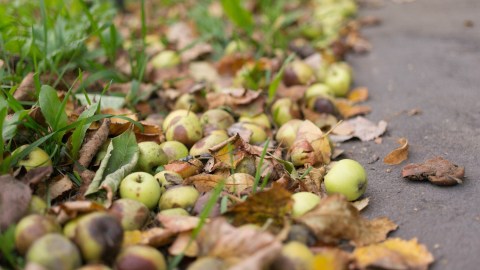Humans Evolved to Break Down Alcohol from Eating Rotten Fruit

Before we ever began brewing beers and fermenting grapes, our ancestors were laying down the genetic groundwork, building up our tolerance for alcohol. Chales Q. Choi of LiveScience has found a study that shows our ancient siblings gained the ability to break down ethanol through a genetic mutation 10 million years ago.
Lead study author Matthew Carrigan, a Paleogeneticist at Santa Fe College, explained the reason behind delving into this particular area of research:
“A lot of aspects about the modern human condition–everything from back pain to ingesting too much salt, sugar and fat–goes back to our evolutionary history. We wanted to understand more about the modern human condition with regards to ethanol.”
Researchers found the trait didn’t help our human ancestors win any drinking contests. But it did assist them in breaking down ethanol found in rotting, fermented fruit on the forest floor when they were starved for options.
The discovery was made by examining the digestive enzyme, ADH4, which is found in the tongues, throats, and stomachs of our living primate relatives, as well as ourselves. Researchers investigated the ADH4 genes of 28 different species of mammals and genes modeled on their ancestors in order to begin pinpointing the time of divergence. Carrigan and his team then used bacteria to read the genes and produce the ADH4 enzyme. Those samples were then tested to see how well the enzymes broke down alcohol.
From these tests, the team was able to estimate our ancestral gene mutation happened around 10 million years ago. Fortunately, the history and science match with mankind’s move to a more terrestrial lifestyle, where all those years ago our ancestors would dine on rotting fruit when there were no other options in sight.
Carrigan looks to place his future efforts in researching whether apes are willing to consume fermented fruits with varying levels of ethanol.
“We also want to look at other enzymes involved in alcohol metabolism, to see if they’re co-evolving with ADH4 at the same time.”
Read more at LiveScience
Photo Credit: unblessed_scalar/Flickr




